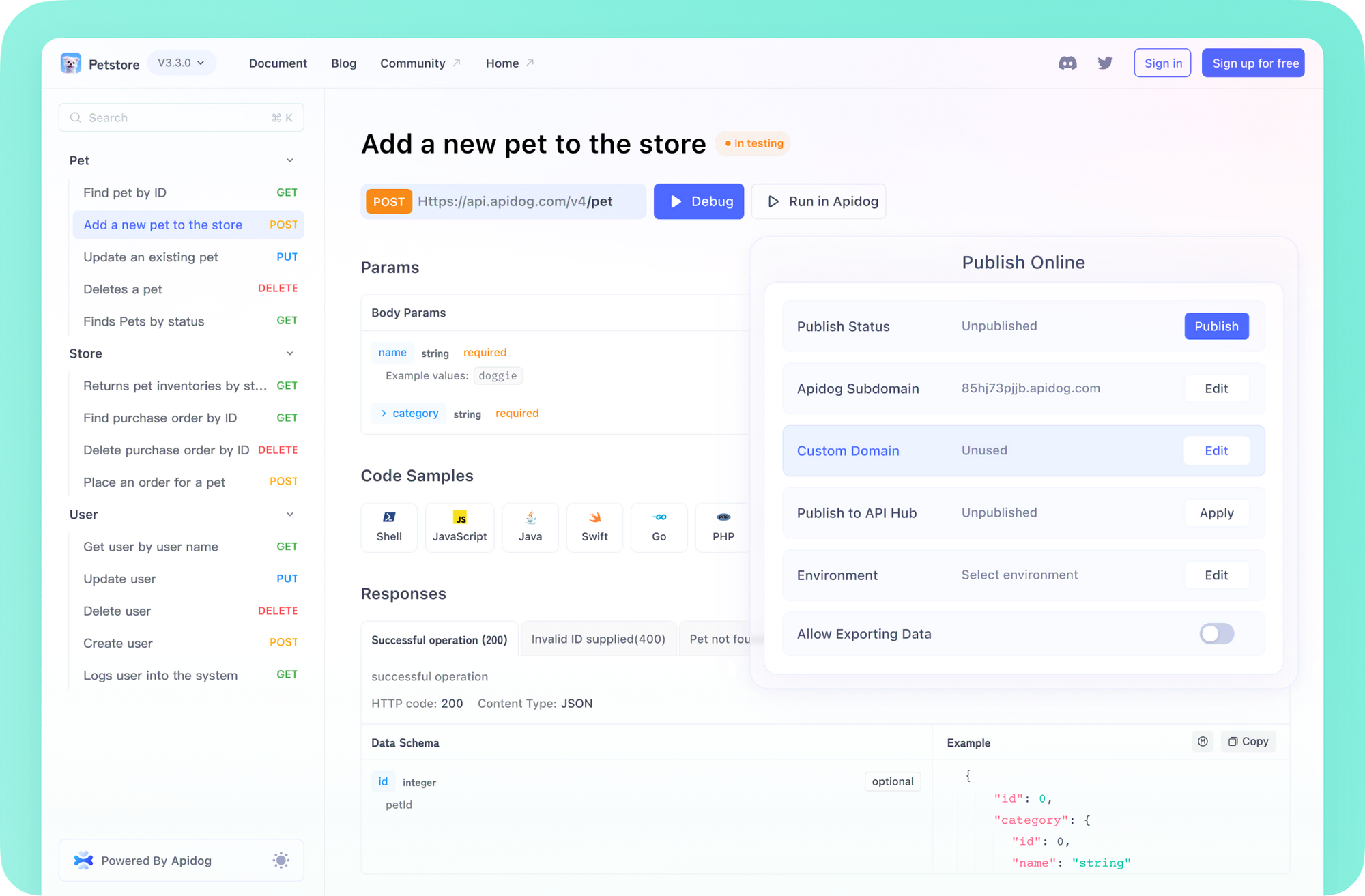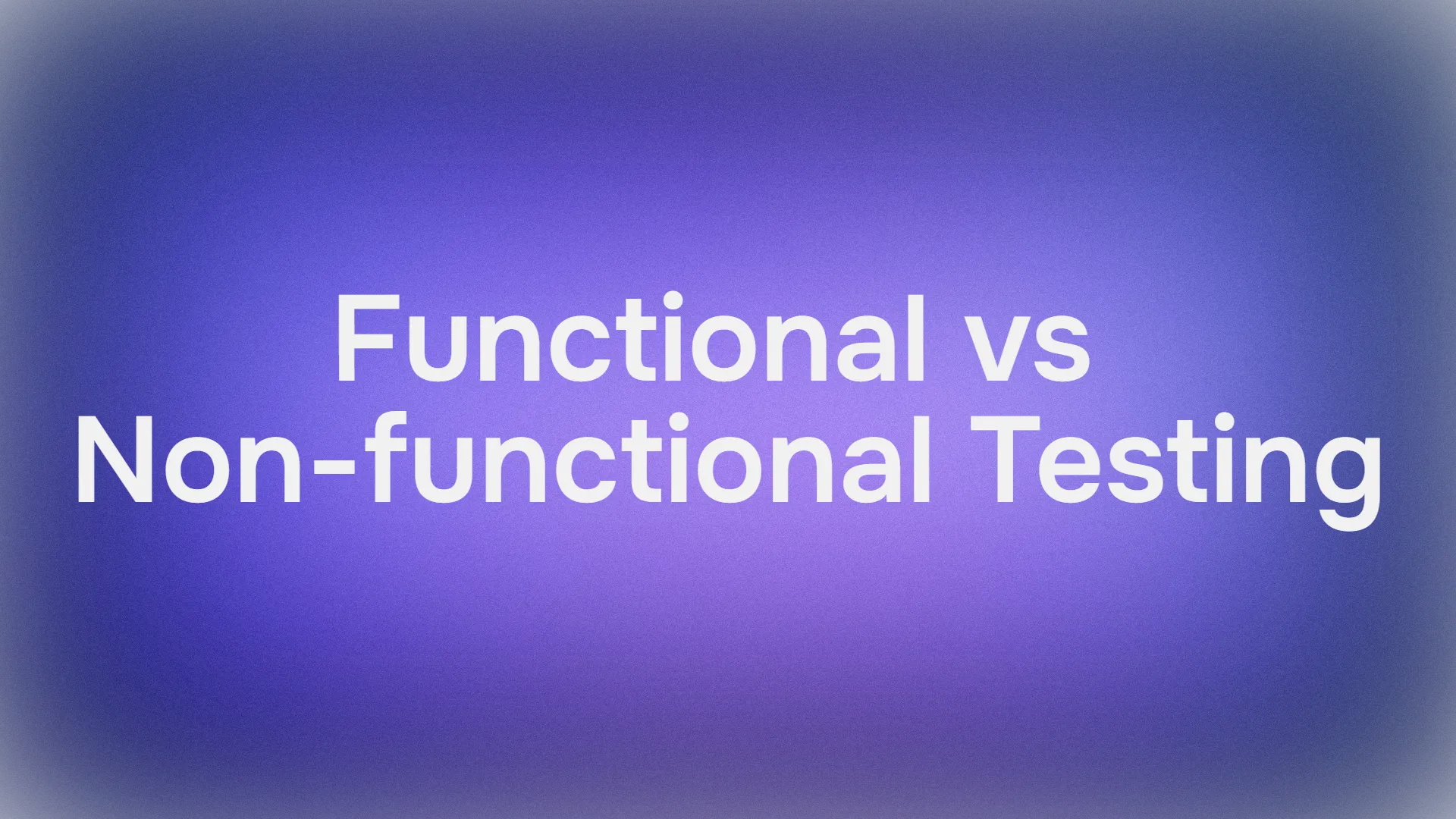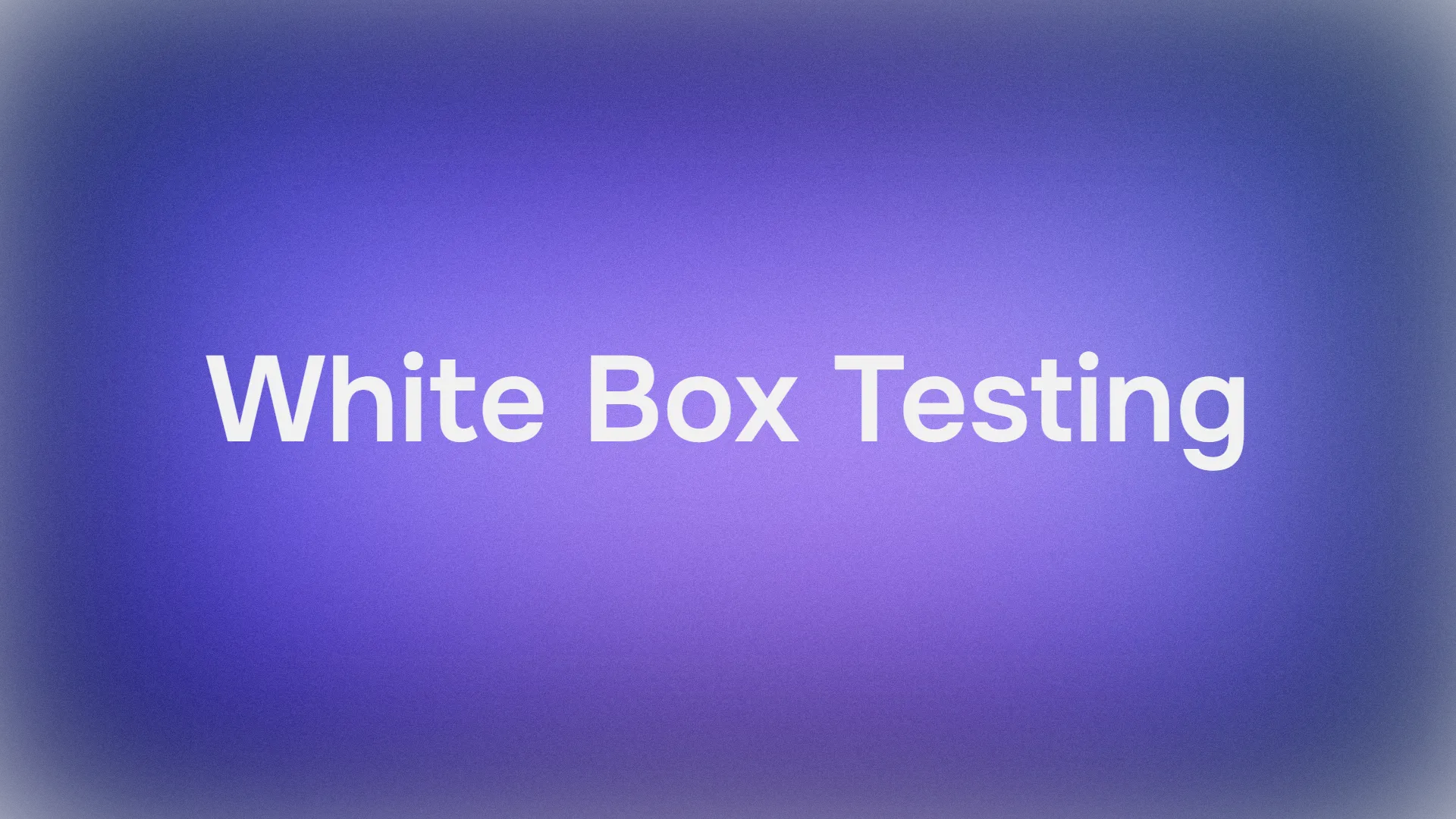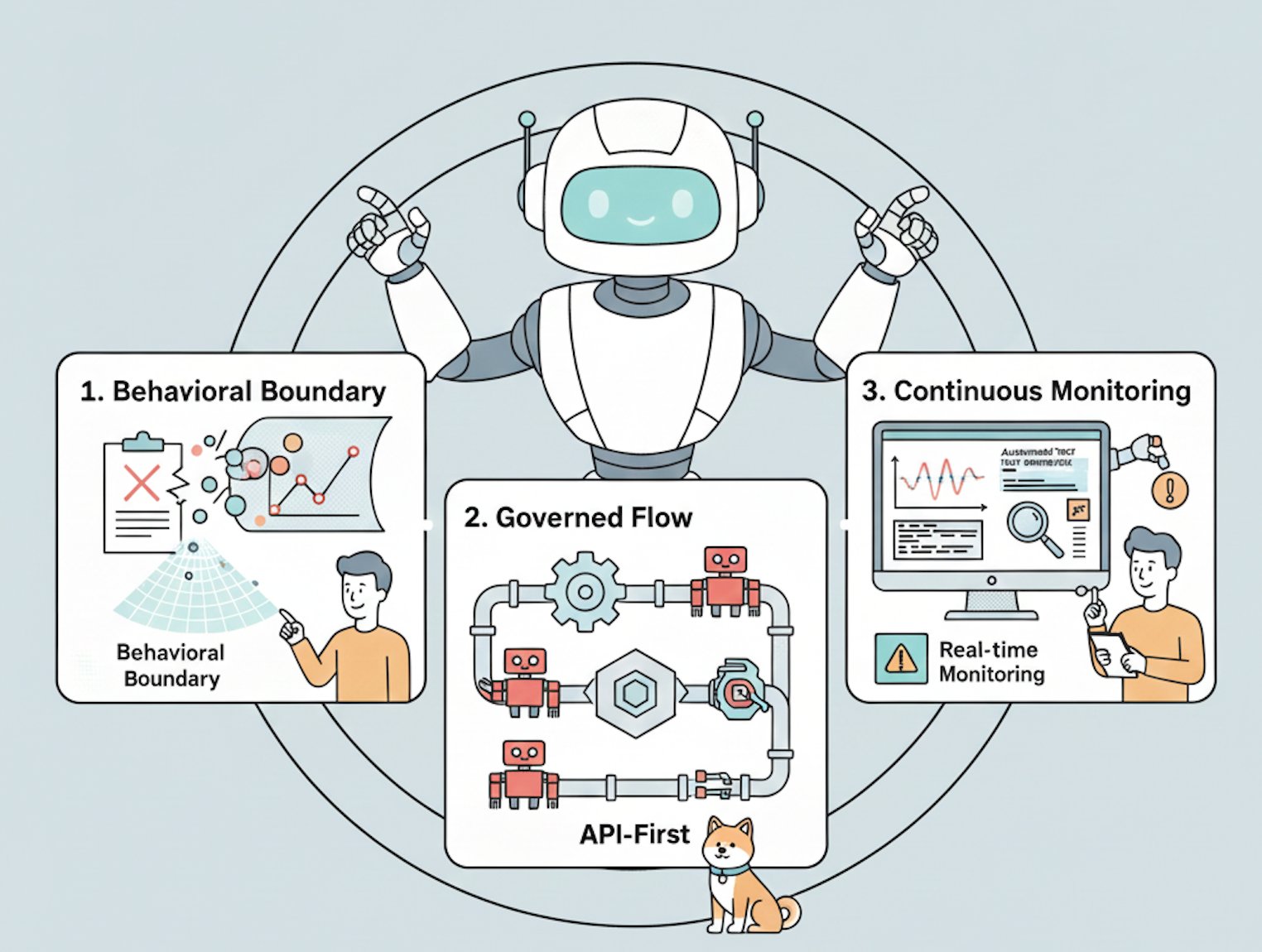Powerful open-source Large Language Models (LLMs) have fundamentally changed the access to state-of-the-art AI capabilities. For developers, this revolution is amplified by the growing number of platforms offering free API access tiers or substantial initial credits. This synergy eliminates significant cost barriers, enabling engineers to experiment with, prototype, and deploy sophisticated AI-driven features using cutting-edge models without immediate financial commitment. As we look towards 2025, understanding the landscape of freely accessible, high-quality open-source LLMs via APIs is crucial for innovation.
Want an integrated, All-in-One platform for your Developer Team to work together with maximum productivity?
Apidog delivers all your demands, and replaces Postman at a much more affordable price!

This article provides a technical exploration of over 30 such models, focusing on those available through providers listed with free usage tiers. We will delve into prominent model families, specific variants, their technical characteristics (where inferable from the listings), and the platforms facilitating their free access.
(Disclaimer: "Free access" pertains to models available via platforms offering no-cost tiers or significant trial credits, based on the source data. Model availability, specific versioning, rate limits, and terms of service are subject to change by the providers. Always consult the provider's official documentation.)
Meta's Llama: Where Localllama is Coming From

Meta's Llama (Large Language Model Meta AI) family has been pivotal in driving the open-source LLM movement. Each successive iteration represents significant advancements in architecture, training data, and overall performance, often setting benchmarks for open models. Many platforms leverage various Llama versions within their free tiers.
Key Llama Models Freely Accessible via API:
- Llama 2 (7B/13B Chat): While older, foundational Llama 2 models, particularly quantized versions (AWQ, INT8), remain accessible, primarily via Cloudflare Workers AI. These serve as efficient baselines.
- Llama 3 8B Instruct: A highly regarded smaller model from the Llama 3 generation, known for its balance of performance and computational efficiency. It's widely available on free tiers, including Groq, Cloudflare (standard and AWQ), OVH, Cerebras, and GitHub Models.
- Llama 3 70B Instruct: The larger counterpart in the initial Llama 3 release, offering substantially more capacity for complex reasoning and generation tasks. Its availability on free tiers is less common but can be found, often with stricter limits, on platforms like Groq and GitHub Models.
- Llama 3.1 8B Instruct: An iterative improvement on the 8B model. Its availability on free tiers is strong, appearing on Groq, Cerebras, OVH, Cloudflare (standard, AWQ, FP8), GitHub Models, Google Cloud (preview), Sambanova (trial), Scaleway (trial), and Hyperbolic (trial). The FP8 availability on Cloudflare and GitHub highlights optimized deployment for edge or resource-constrained environments.
- Llama 3.1 70B Instruct: The corresponding larger model in the 3.1 series. Free access points include OVH, GitHub Models, Google Cloud (preview), Scaleway (trial), Hyperbolic (trial), and Sambanova (trial).
- Llama 3.1 405B (Base/Instruct): Representing the pinnacle of the Llama 3.1 series in terms of parameter count. Access via free trials is noted on platforms like Hyperbolic and Sambanova Cloud. GitHub Models also lists access. This scale typically involves significant computational resources.
- Llama 3.2 (1B/3B Instruct): Newer, highly efficient small models targeting scenarios where resource usage is paramount. Available via Cloudflare and free trials on Hyperbolic and Sambanova.
- Llama 3.2 (11B/90B) Vision Instruct: Multimodal variants integrating vision capabilities. The 11B version is notably available on Together's dedicated free tier and Cloudflare, while the much larger 90B version is listed as free during preview on Google Cloud and available via trials on Sambanova. This marks a significant expansion into multimodal tasks for the Llama family.
- Llama 3.3 70B Instruct: A more recent large instruction-tuned model. Its availability on free tiers is quite good, offered by Cerebras, Groq (with lower daily limits than 8B), OVH, Together (dedicated free tier), Google Cloud (preview), GitHub Models, and trials on Hyperbolic and Sambanova.
- Llama 4 Scout / Maverick Instruct: The next generation preview models from Meta. Scout appears focused on efficiency (16E likely refers to Mixture-of-Experts parameters), while Maverick (128E) targets higher performance. Both are available via Groq (with lower daily limits), Cerebras (8K context limit), Google Cloud (preview), GitHub Models (FP8 variant for Maverick), and trials on Sambanova and Chutes.
- Llama Guard (7B / 3 8B): Models specifically designed for AI safety tasks like input/output filtering and content moderation. Available via Cloudflare (AWQ 7B) and Groq / Sambanova (trial) / GitHub Models (3 8B).
Llama Family Highlight (Free Tier Access): Llama 3.3 70B Instruct stands out due to its combination of being a recent, large, high-performance model with relatively broad availability across multiple free tiers (Cerebras, Groq, OVH, Together) and previews/trials (Google Cloud, GitHub, Hyperbolic, Sambanova). For multimodal tasks, the Llama 3.2 11B Vision Instruct on Together's free tier and Cloudflare is a key accessible option. For maximum efficiency, the Llama 3.1 8B Instruct variants (including quantized AWQ/FP8) offer widespread availability.
Mistral AI: From French with Love

Mistral AI quickly gained prominence by releasing open-weight models demonstrating exceptional performance relative to their parameter counts, often employing architectural innovations like Grouped-Query Attention (GQA) and Sliding Window Attention (SWA).
Key Mistral Models Freely Accessible via API:
- Mistral 7B Instruct (v0.1, v0.2, v0.3): A foundational model that set high benchmarks for the 7B parameter class. Its various versions are widely available across free tiers, including OpenRouter, Cloudflare (v0.1, v0.2 standard/AWQ/LoRA), OVH (v0.3), and trials on Sambanova (E5-Mistral fine-tune). Its ubiquity makes it an excellent starting point.
- Mixtral 8x7B Instruct v0.1: A high-performance Sparse Mixture-of-Experts (SMoE) model. Each token only processes a fraction (typically two 'experts' of 7B parameters each) of the total parameters, providing computational efficiency closer to a ~14B dense model but performance often rivaling much larger models. Accessible via OVH's free beta tier.
- Mistral Nemo: A newer architecture from Mistral. Available via OpenRouter, OVH, GitHub Models, and Scaleway's trial.
- Mistral Small 3.1 24B Instruct: A proprietary model from Mistral, but access is provided through free tiers on OpenRouter and Cloudflare, and via trials on Scaleway and GitHub Models. Note: While powerful, this isn't strictly an open-source model, but included due to free API availability listed.
- Zephyr 7B Beta: A popular fine-tune of Mistral 7B by HuggingFace H4, known for improved instruction following and chat capabilities. Available via OpenRouter and Cloudflare (AWQ).
- Hermes 2 Pro Mistral 7B: Another well-regarded fine-tune based on Mistral 7B. Accessible via Cloudflare's free tier.
- OpenHermes 2.5 Mistral 7B: Yet another Mistral 7B fine-tune, available via Cloudflare (AWQ).
Mistral Family Highlight (Free Tier Access): Mistral 7B Instruct (any version) remains a standout due to its proven track record, excellent performance-per-parameter, and extremely wide availability across numerous free API providers (OpenRouter, Cloudflare, OVH). For developers seeking SMoE architecture exploration, the Mixtral 8x7B Instruct on OVH's free tier is a key offering.
Google Gemma: Small but Mighty

Gemma represents Google's family of open models, developed using research and technology shared with their flagship Gemini models. They offer a range of sizes and are designed for responsible AI development.
Key Gemma Models Freely Accessible via API:
- Gemma 2B Instruct: A smaller model suitable for less demanding tasks or resource-constrained environments. Available via Cloudflare (LoRA variant).
- Gemma 7B Instruct: A capable mid-sized model. Available via Cloudflare (standard and LoRA variants).
- Gemma 2 9B Instruct: The successor to the original 7B model, offering enhanced capabilities. Accessible via OpenRouter and Groq free tiers.
- Gemma 3 (1B, 4B, 12B, 27B) Instruct: The latest generation, spanning a wide range of sizes. The smaller 1B and 4B models are on OpenRouter and Google AI Studio. The 12B is on OpenRouter, Google AI Studio, and Cloudflare. The larger 27B model is available via OpenRouter, Google AI Studio, and Scaleway's trial. Google AI Studio provides generous free quotas for these.
Gemma Family Highlight (Free Tier Access): The Gemma 3 series, particularly the 12B Instruct and 27B Instruct, represents the latest advancements available freely via OpenRouter and Google AI Studio (with high limits). The widespread availability across sizes (1B to 27B) within the Gemma 3 line on free tiers (OpenRouter/Google AI Studio/Cloudflare/Scaleway) makes it a versatile family for experimentation. The Gemma 2 9B Instruct on Groq also offers high-speed inference access.
Alibaba's Qwen: Best Open Source Multimodel & Multilingual LLM?

Alibaba's Qwen (Tongyi Qianwen) models have demonstrated strong capabilities, particularly in multilingual contexts and, more recently, vision-language tasks.
Key Qwen Models Freely Accessible via API:
- Qwen 1.5 Chat (0.5B, 1.8B, 7B, 14B): A range of chat-tuned models available on Cloudflare's free tier, often in efficient AWQ (Activation-aware Weight Quantization) format, suitable for scalable deployments.
- Qwen 2.5 7B Instruct: The latest generation 7B instruction-following model. Available via OpenRouter.
- Qwen 2.5 72B Instruct: A large, powerful instruction-tuned model from the newest series. Available via OpenRouter and trials on Hyperbolic.
- Qwen 2.5 VL (Vision Language) Instruct (3B, 7B, 32B, 72B): Multimodal variants capable of interpreting both text and images. Available in various sizes on OpenRouter, with the 72B also on OVH and trials on Hyperbolic. This strong multimodal offering across sizes is a key feature.
- Qwen QwQ 32B: A specific variant available via OpenRouter (including Preview), Groq, Cloudflare, and trials on Sambanova and Hyperbolic.
- Qwen2.5 Coder 32B Instruct: A large model specialized for coding tasks. Available via OpenRouter, OVH, Cloudflare, and trials on Hyperbolic and Scaleway.
Qwen Family Highlight (Free Tier Access): The Qwen 2.5 VL Instruct series is a major highlight due to its broad availability (OpenRouter, OVH, Hyperbolic trial) across multiple sizes (3B to 72B) for vision-language tasks within a free access context. For coding, the Qwen2.5 Coder 32B Instruct is a strong, freely accessible option (OpenRouter, OVH, Cloudflare).
Microsoft's Phi: Another Path

Microsoft's Phi models challenge the notion that larger parameter counts are always necessary for high performance. They are trained on meticulously curated "textbook-quality" data, enabling impressive reasoning and language understanding capabilities in relatively small models.
Key Phi Models Freely Accessible via API:
- Phi-2: An early demonstration of the "small model" philosophy, known for surprisingly strong reasoning. Available via Cloudflare.
- Phi-3 Mini / Small / Medium Instruct: Available in various sizes (Mini ~3.8B, Small ~7B, Medium ~14B parameters) and context lengths (4k/8k standard, 128k extended). Access to these is primarily listed via GitHub Models' free tier. The 128k context variants are particularly noteworthy for processing long documents.
- (Experimental/Preview) Phi-3.5/Phi-4: Newer iterations listed on GitHub Models, including MoE, vision, and potentially larger base models, indicating future directions.
Phi Family Highlight (Free Tier Access): The Phi-3 series (Mini, Small, Medium) with 128k context length variants, accessible via GitHub Models, stands out. This combination of compact model size, strong performance (relative to size), and exceptionally long context window makes them unique offerings in the free tier landscape, ideal for tasks requiring analysis of extensive text.
DeepSeek: the Thinking Whale

DeepSeek AI has carved out a niche by releasing open-source models demonstrating exceptional proficiency in specialized domains like programming and mathematics.
Key DeepSeek Models Freely Accessible via API:
- DeepSeek Coder (6.7B Base/Instruct): Focused code generation models. The instruct version is available via Cloudflare (AWQ).
- DeepSeek Math 7B Instruct: A model specifically fine-tuned for mathematical problem-solving. Accessible via Cloudflare.
- DeepSeek V3 / V3 0324: General chat models available via OpenRouter and trials on Hyperbolic and Sambanova.
- DeepSeek R1: A foundational model available via OpenRouter and trials on Sambanova and Chutes.
- DeepSeek R1 Distill (Llama 70B / Qwen 14B / Qwen 32B): Knowledge distillation models aiming to capture the essence of larger models in a more compact form. Widely available via OpenRouter, Groq (Llama 70B), OVH (Llama 70B), Cloudflare (Qwen 32B), Together (Llama 70B free tier), Scaleway (Llama 70B/8B trial), and trials on Sambanova.
DeepSeek Family Highlight (Free Tier Access): The DeepSeek Coder and DeepSeek Math models on Cloudflare are valuable specialized tools available for free. Additionally, the DeepSeek R1 Distill Llama 70B is notable for its widespread availability across multiple free tiers (OpenRouter, Groq, OVH, Together), offering a distilled version of a large model.
Other Notable Open Models via Free APIs
Beyond the major families, several other fine-tuned or specialized open models appear on free tiers:
- OpenChat 3.5 0106: Available via Cloudflare.
- Starling LM 7B Beta: Available via Cloudflare.
- SQLCoder 7B 2: Specialized for SQL generation, available via Cloudflare.
- Dolphin / DeepHermes / Featherless / Rogue Rose / OlympicCoder / QwQ ArliAI: Various fine-tunes and experimental models accessible primarily via OpenRouter and/or Chutes free tiers.
How to Access and Use These Free APIs
Gaining access typically involves registering with one or more provider platforms. These platforms range from:
- Aggregators: Like OpenRouter, providing a unified interface to models from various sources, often including many free options. Unify acts as a router with trial credits.
- Cloud Providers: Google Cloud (Vertex AI), Cloudflare (Workers AI), OVH Cloud (AI Endpoints), Scaleway offer free tiers or previews integrated into their broader cloud ecosystems. Often require account setup, sometimes with payment verification (even for free tiers).
- Dedicated LLM Providers: Groq (focused on low-latency inference), Mistral, Cerebras, Together offer free tiers or dedicated free models alongside paid options. Often require sign-up, potentially phone verification.
- Platform Integrations: GitHub Models integrates LLM access into the developer workflow, with limits tied to Copilot subscriptions.
- Compute Platforms: Modal, Baseten offer general compute platforms where you pay for usage, but provide significant monthly free credits ($30) sufficient for substantial LLM experimentation.
- Trial Credit Providers: Fireworks, Nebius, Novita, AI21, Upstage, NLP Cloud, Hyperbolic, Sambanova provide initial dollar or token credits for exploring their model offerings.
Technical Considerations:
- API Keys: Essential for authentication; keep them secure.
- Rate Limits: Free tiers invariably have limits (Requests Per Minute/Day, Tokens Per Minute/Month, concurrent requests). These are crucial factors for application viability. The
README.mddetails these extensively for many providers (e.g., Groq's varying daily limits, Google AI Studio's granular token/request limits, OVH's simple RPM limit). - Quotas: Similar to rate limits but often define total usage over a period (e.g., Cohere's monthly request limit, Cloudflare's daily neuron allocation, Scaleway's total free tokens).
- Quantization: Techniques like AWQ (Activation-aware Weight Quantization) or FP8 (8-bit Floating Point) are frequently used, especially on Cloudflare and GitHub Models, to reduce model size and computational requirements, enabling deployment on free or cost-effective infrastructure. This trades some precision for efficiency.
- Context Windows: Vary significantly (e.g., Cerebras free tier limited to 8K, Phi-3 offering 128K). Choose based on task requirements.
- Data Privacy/Usage: Be aware of provider policies, especially regarding data usage for model training (e.g., Google AI Studio notes, Mistral Experiment plan).
All Right, So What's the Best Open Source LLM for Each Use Case?
Choosing the "best" free, open-source LLM API depends heavily on the specific development task:
- General Chat/Instruction Following: Llama 3.x Instruct, Mistral 7B Instruct, Mixtral 8x7B, Gemma 2/3 Instruct, Qwen 2.5 Instruct are strong contenders. Start with widely available options like Mistral 7B or Llama 3.1 8B.
- Coding: DeepSeek Coder, Qwen2.5 Coder, Llama 4 Scout/Maverick (often show coding benchmarks), Codestral (Mistral, free tier).
- Multimodal (Text + Image): Llama 3.2 Vision Instruct, Qwen 2.5 VL Instruct series, Phi-3.5 Vision, Aya Vision. Check availability on OpenRouter, Cloudflare, Together, Google Cloud.
- Long Context Processing: Phi-3 128k variants via GitHub Models.
- High Inference Speed: Groq often leads, offering Llama 3 variants, Gemma 2, Mixtral (via Mistral Saba), etc.
- Maximum Power (via Free Tiers/Previews): Look towards the largest available models like Llama 3.3 70B (multiple providers), Llama 3.1 405B (trials), Qwen 2.5 72B, potentially experimental previews on Google Cloud or GitHub.
- Efficiency/Resource Constraints: Smaller models like Llama 3.2 (1B/3B), Phi-3 Mini, Gemma 3 (1B/4B), or quantized models (AWQ/FP8) on Cloudflare/GitHub are ideal.
Conclusion
The rich ecosystem of open-source LLMs combined with accessible free API tiers presents an unprecedented opportunity for developers in 2025. From versatile chat models like Llama 3 and Mistral 7B to specialized coding engines like DeepSeek Coder and multimodal powerhouses like Qwen VL, a vast array of capabilities is available for experimentation and integration without initial cost. By understanding the models, the platforms offering access, and the associated technical constraints like rate limits and context windows, developers can effectively leverage these resources to build the next generation of AI-powered applications. Remember to consult provider documentation for the latest details and always use these valuable resources responsibly.
Want an integrated, All-in-One platform for your Developer Team to work together with maximum productivity?
Apidog delivers all your demands, and replaces Postman at a much more affordable price!



